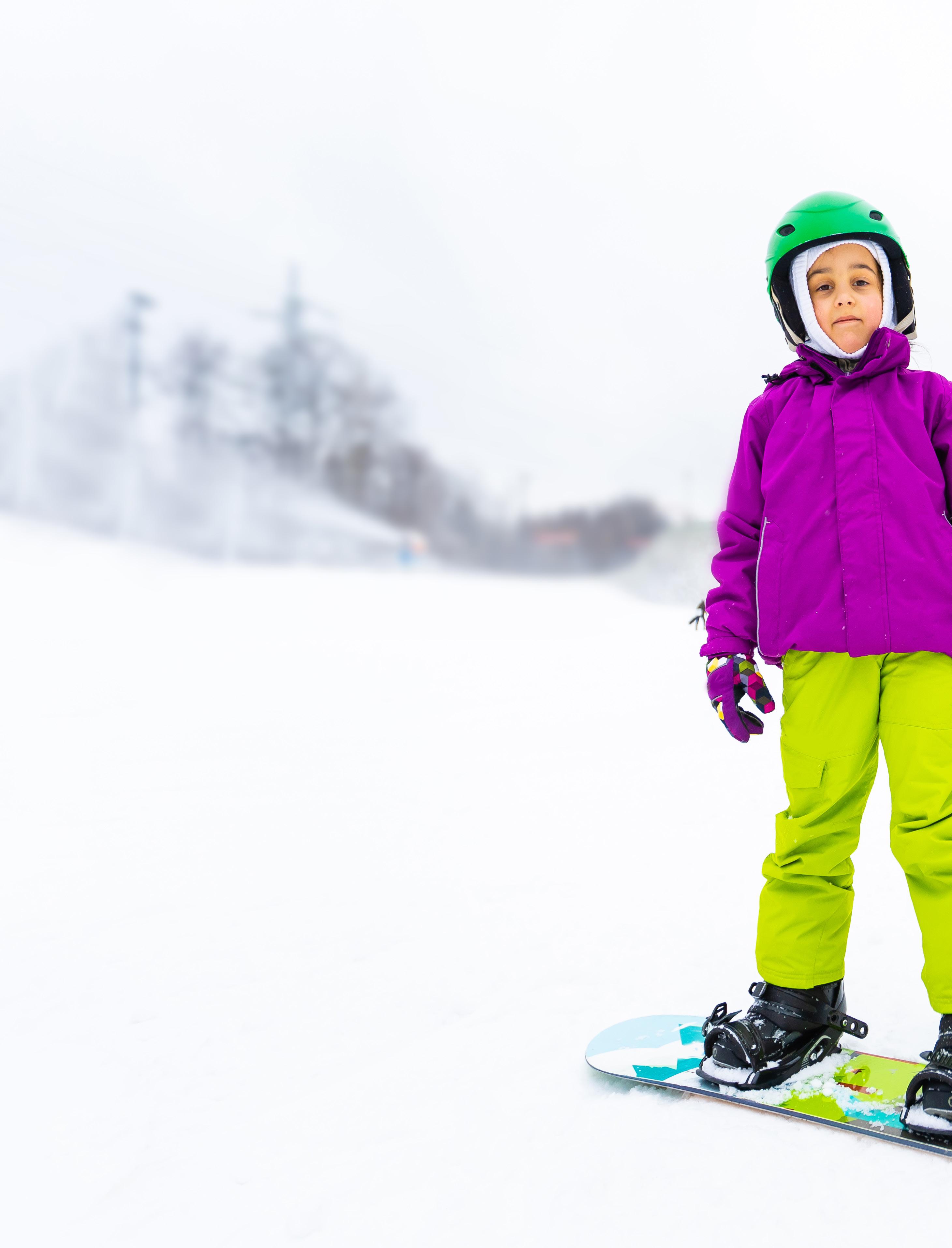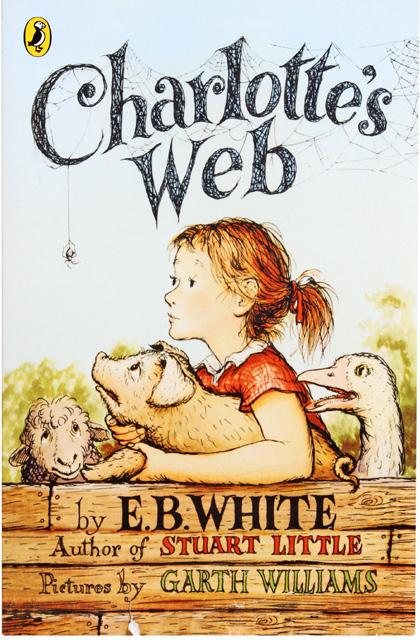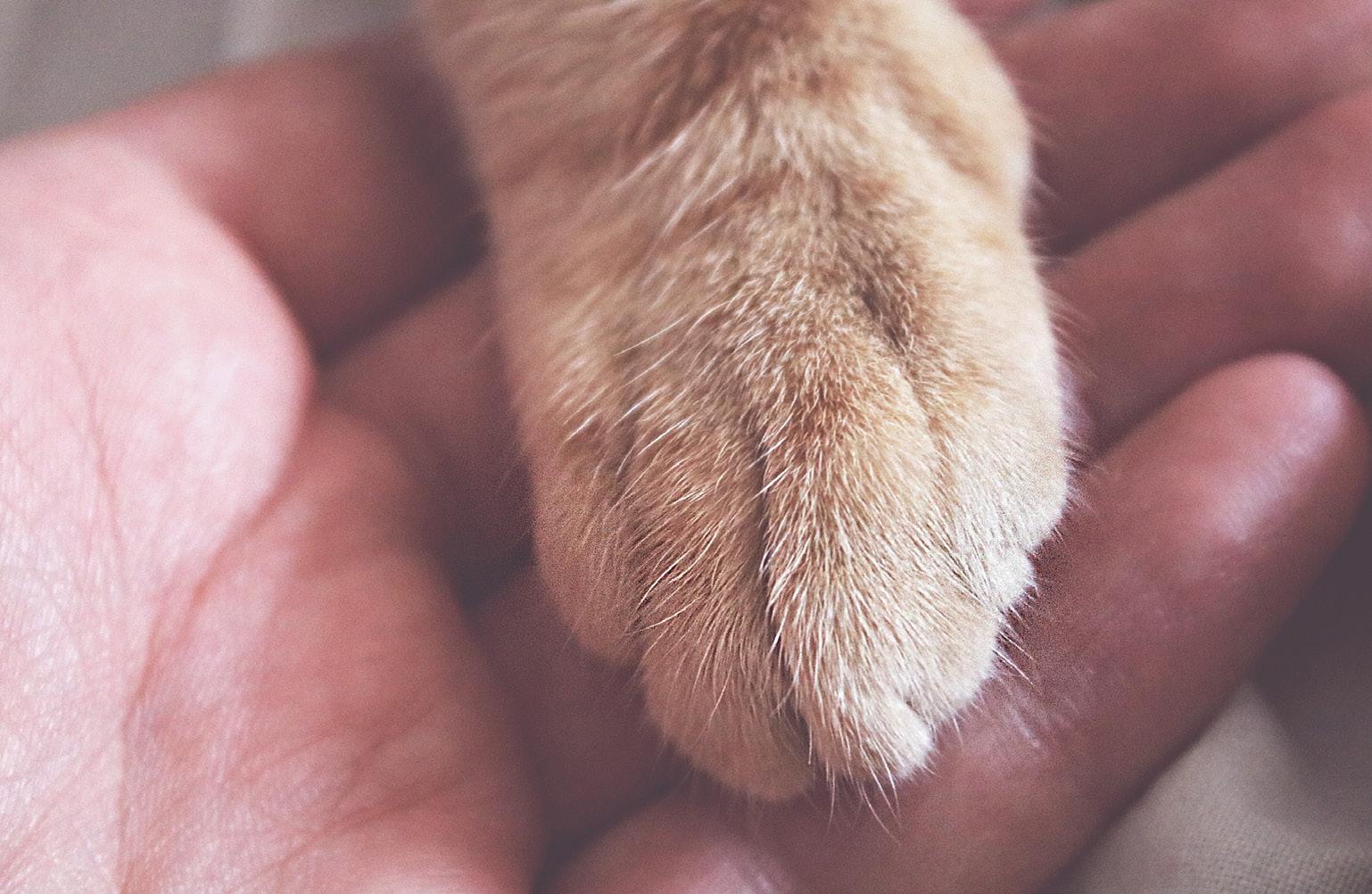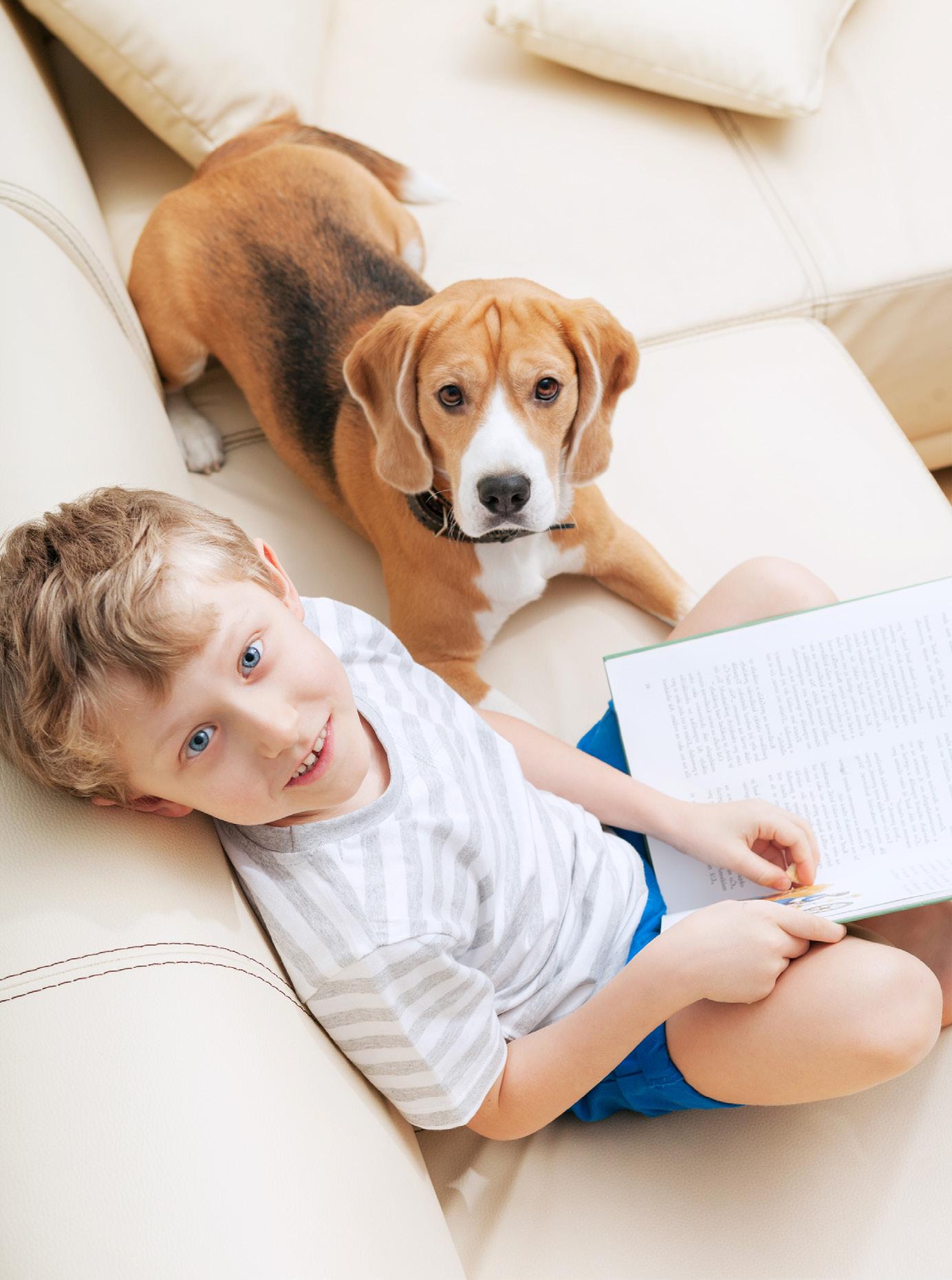





















It is amazing to think that another year has gone by As we reflect on 2022, we are reminded of the symbolic nature of the start of a new year.
A new year gives us an opportunity to start again. A new opportunity to set forth resolutions that we intend to keep in order to better ourselves, our family and our environment. When the page flips over to January on the calendar, we have a lot to be grateful for from the past twelve months, but even more to be hopeful for in the next twelve.
You see, it may be symbolic and it may start off with two dreary, dark months in January and February, but a new year gives us the motivation to aim to be the best we can be and ultimately try to get right what we came up short on in the past year. The staff at Roanoke Valley Family magazine is no different. We are eager for the New Year to begin so
we can reach our next milestones, create our next big event and reach all of the new parents in our region. We invite you to come along for the ride and challenge yourself to be the best mom, dad, grandparent, aunt, uncle or teacher you can be.

We look forward to bringing you, our readers, quality articles and content in the year to come and continue our growth in the region. We are encouraged by the strength and growth of our region and we know that it will help lead the Roanoke Valley to bigger and better things in the years that follow.





Happy New Year!
“Be always at war with your vices, at peace with your neighbors, and let each year find you a better man.”Benjamin Franklin. Proud Members of the Parenting Media Association since 2013! Learn more at www.parentmedia.org. 8



Andrea, Josh, Anika and Evelyn
7 8
We welcome reader comments, submissions, and the support of advertisers.


We reserve the right to refuse or edit any materials submitted to us as we deem inappropriate for our audience. Please include a self-addressed, stamped envelope with any submission to be returned. We do not accept responsibility for unsolicited materials.
Roanoke Valley Family and www.roanoke.family are published by MoFat Publishing. Roanoke Valley Family is published monthly. The views and the opinions expressed by the writers and advertisers do not necessarily represent those of Roanoke Valley Family, its staff, or its contributors. While multiple businesses, schools, and organizations are represented in our pages, and magazines are often distributed to students according to the policies and procedures of each school district, this is not a publication coordinated or endorsed by any public or private school district, nor is it a publication with any religious or political objectives. As a mass media outlet, it is our oath and responsibility to communicate with due diligence, through our content, the plurality of views and opinions reflected in our audience of Central and Southwest Virginia. Readers are strongly encouraged to verify information with programs and businesses directly. Parents are urged to thoroughly research any decisions involving their children. Copyright 2021 by MoFat Publishing, LLC. All rights reserved. All material, including artwork, advertisements, and editorials, may not be reproduced without the expressed written consent of the publisher.
Snow sports are a great way to exercise as a family but can take some preparations.

There’s several household common items that can be dangerous to your furry family members- learn how to avoid costly vet bills!
Read on page 14




Stop by Elmwood Park in Downtown Roanoke for Ice Skating and Ice Sliding!

On days that Roanoke City Schools are out, the rink is open 11:00AM –10:00PM! Limited hours on Thanksgiving and Christmas Eve. Closed Christmas Day.
Monday-Thursday - Closed (Except Jan 5)

Friday - 6:00PM - 10:00PM
Saturday - 11:00AM - 10:00PM
Saturda Night’s Main Event Jan 14 | Berglund Center theberglundcenter.com

Sunday - 12:00PM - 7:00PM
Skate Admission: $6 | Skate Rental: $2 Season pass available for $75.Private Rentals are available. Visit www.ElmwoodOnIce.com for more information.


Your kitchen is the heart of your home. It’s a place where family and friends gather. It’s also a space where you may seem to need more space, whether you’re making breakfast for the kids or hosting a big dinner party.
up the “real estate” traditional swinging doors take up. Due to their unique space-saving possibilities, versatility and aesthetics, wall-mount sliding doors can make your kitchen more open and inviting.
Using innovative wall-mount door hardware, you can unlock your kitchen’s potential by freeing

A standard hinged door consumes 10-14 square feet of floor space to swing open and shut, putting
kitchen space at a premium. Single or converging wall-mount sliding doors allow you to utilize this floor space for kitchen furnishings, storage, extra mingling room for guests and more. They also give kitchens a more spacious look and can enhance your home’s design flow, making it more welcoming and facilitating movement between rooms, which is essential for gatherings and larger families with children.
To maximize your kitchen’s footprint and optimize functionality, an option like wall-mount door hardware from Johnson Hardware can provide a new world of architectural possibilities for your kitchen, regardless of size or layout. Ideal for wider kitchen entryways, converging wall-mount door hardware allows doors to glide smoothly as they open whenever you want a free flow for entertaining or close for privacy during meal preparation.
Converging doors can add sophistication or create a cozy feel, depending on the hardware configuration and door style you choose.
Available with or without fascia in either clear satin or bronze anodized aluminum, the U.S.-made hardware and track exceed ANSI safety standards and can successfully complete 100,000 opening and closing cycles. You can also add your own valance to match the door material and trim.
Wall-mounted sliding doors also work well for kitchen pantries and large recessed shelving areas where you want to conceal clutter and ensure clean, streamlined spaces. With Johnson’s array of hardware configurations, you can create personalized looks that integrate the door designs and materials you desire with options for doors up to 125 pounds, which
are equipped with wall-mounted jump-proof aluminum box tracks and adjustable door hangers for easy installation, as well as options up to 400 pounds, featuring wall-mounted, heavy-gauge I-beam tracks and smooth-rolling, ball-bearing four-wheel hangers.
Installing wall-mount sliding door hardware in your kitchen – and beyond – can be an easy yet high-impact improvement that reduces space constraints while adding warmth, functionality and appeal to your home. For more information, visit johnsonhardware.com

• Mama Maria’s
11 AM - 2 PM • 3 & under
free buffet with paid adult W. Main St., Salem (540) 389-2848
• Golden Corral
All Day • 3 & under free buffet with paid adult 1441 Towne Square Blvd., Roanoke (540) 563-8826
IHop
4PM-10PM • 12 & Under All Locations
• Shoney’s
All Day • 4 & under, free kids meal with adult entree purchase. Drink not included 2673 Lee Highway, Troutville (540) 992-6400
• Famous Anthony’s
3 PM - Close • 1 child per paid adult
All Locations in Roanoke, Salem, & Vinton (540) 362-1400
• Buffalo Wild Wings
4 PM - 9 PM • 12 & under, 1 child per paid adult All Locations (540) 725-9464

• El Rio Mexican Grill
All Day • 10 & under, 1 child per paid adult 4208 Electric Rd., Roanoke (540) 6854343
• Firehouse Subs
All Day • 11 & under, 2 children per paid adult combo,dine in Blacksburg (540) 961-0371


• The Green Goat All Day • 12 & under, 1 child per paid adult 802 Wiley Dr. SW, Roanoke (540) 904-6091
• Denny’s
4 PM - 10 PM • 12 & under, 1 child per paid adult
All Locations Roanoke & Salem (540) 389-5074
• Macado’s
4 PM - 9 PM • 12 & under, $1 child meal per paid adult
All Locations in Roanoke & Salem (540) 776-9884
• McAlister’s Deli
5 PM - Close • 2 children per paid adult
2063 Colonial Ave., Roanoke (540) 204-4407
• Town Center Tap House All Day • 12 & under, 2 children per paid adult 90 Town Center St., Daleville (540) 591-9991
• Firehouse Subs
All Day • 12 & under, 1 child per paid adult Colonial Ave, Town Square & Salem only (540) 345-3131
• Pizza Hut
5 PM - Close • 10 & under, free buffet per paid adult 1016 Hershberger Rd., Roanoke (540) 362-3834
• K&W
All Day • 12 & under, 1 child per paid adult Hershberger Rd. Roanoke (540) 563-4977

Wednesday
• Dogwood
4 PM - Close • 10 & under, per paid adult 106 E. Lee Ave., Vinton (540) 343-6549
Thursday
• The Roanoker
4:30 PM - Close • 10 & under, 2 children per paid adult 2522 Colonial Ave., Roanoke (540) 344-7746
• Jerry’s Family Restaurant
4 PM - Close • 6 & under, 1 child per adult meal purchase 1340 E. Washington Ave., Vinton (540) 343-4400
Friday See Everyday Deals!
Saturday
• Famous Anthony’s
12 PM - Close • 1 child per adult meal
All Locations Roanoke, Salem, Vinton (540) 362-1400
Sunday
• Pizza Den
5 PM - 8:30 PM • 10 & under free buffet per paid adult buffet and drink purchase Salem (540) 389-1111
• Local Roots
5 PM -7 PM • 5 & under eat for free, discount for ages 5-7 per paid adult 1314 Grandin Rd., Roanoke (540) 206-2610
• T.G.I.Fridays
All Day • 12 & under 1 with paying adult 4869 Valley View Blvd., Roanoke (540) 362-1475
• Moe’s Southwestern Grill
All Day • 1 free per paid adult
All Roanoke & Blacksburg locations
• Firehouse Subs
All Day • 12 and Under 1 free per paid adult Keagy Road, Roanoke 540-204-4471

• Rodeo Grande
All Day • 12 and Under 1 free per paid adult Valley View, Roanoke 540-206-2296

• Lew’s Restaurant SW
All Day • 12 and Under 2 free per paid adult Walnut Avenue, Roanoke 540-682-5925
Roanoke Valley Family Magazine publishes these deals for informational purposes only. A Listing here does not guarantee a discount at any of the mentioned restaurants. Promotions often change without notice and we recommend calling the restaurant to confirm any discount before arrival.

 by Pam Moore
by Pam Moore
The idea of skiing with your kids may feel daunting. But as the parents I interviewed for this piece agreed, it’s worth it. With a lot of planning (and maybe a little bribery) it’s totally doable. Here are some things to consider before hitting the slopes.
Parents agreed, the earlier kids start skiing, the more confident they’ll be and the more fun they’ll have. Colorado mom Ellen Nordberg, got her twins in lessons by age four and says, “Our kids are 13 and committed skiers for life for having started so early.” Ian, a Colorado dad, recommends not rushing, but instead, waiting until kids are “excited about skiing so they’re self-motivated.”
You may be wondering if your child is ready. If that’s the case, Nate Chesley, a former Alta, Utah ski instructor and dad, recommends asking the following question:
“How confident am I that my child will have fun?”
According to Chesley, success is less about the actual skiing and more about kids having the confidence to be separated from their parents, bundled up in bulky outerwear, trying to learn a new sport, with foreign objects strapped to their feet. The key to a successful experience is making sure your child is having fun, because as Chesley says, “Learning stops when the fun stops.” Even if your child spends half the lesson “eating snowballs,” if she’s smiling at the end and excited to try again, you can call it a win.
Be honest with yourself about why you want your children to ski and what you hope they will accomplish. Says Chesley, “Your motivations and expectations, and whether they’ve been met…will shape your child’s comfort and engagement with [skiing]. Push too hard, and you’re fighting against… fear and discomfort.” High expectations lead to disappointment. Colorado mom Rebecca Johnson says kids “don’t care
that you spent $80 to take one whiney run on the kiddie hill.” Moreover, if you pressure them, “they may not take
another run just to spite you.” A Washington dad lets his kids choose whether to ski after their morning lesson, in order to avoid meltdowns and to keep it fun.
From scheduling to packing your bag, planning saves stress, time, and money. Being organized means avoiding paying resort prices for a forgotten mitten. If possible, ski on weekdays. Crowds are lighter, and prices may be lower. Also, enroll your child in lessons in advance, as they can fill up.
Arrive 15 minutes early for your child’s ski lesson to allow for unexpected delays and the inevitable bathroom stop once all their gear is zipped and buttoned. Remember, kids pick up on your anxiety. If you’re stressed about running late, they will be, too.

Layers are key to staying warm. While kids’ bodies generally heat up faster than ours do, kids are more likely to complain about being too cold than too warm. If you can’t justify the cost of quality items your kid will wear for one season, try borrowing items.
Musts: -long underwear -ski socks -warm sweater or fleece jacket -warm pants -snow pants -ski jacket -neck gaiter -mittens -goggles -Ski helmet (doubles as a hat) Remember to apply sunblock and chapstick with SPF. The combination of UV rays reflected off the snow and altitude make skin especially vulnerable.
Most parents recommend renting skis and boots each season. Many ski shops have a trade-up program where you can trade last season’s gear for a bigger size at a discounted price the next season, or trade out for the next size mid-season at no extra cost. If you rent skis just for the day, prices are generally lower at your local ski shop than at the mountain. Renting locally also saves time at the ski resort.
That said, if you have multiple children, buying could make sense. Joy Jackson, Colorado mom of three, buys her kids’ equipment. “It gets handed down to the next child and we tune them better than the rental stores do.”
Allow time for a solid breakfast. For picky eaters, consider serving a favorite food (exception: Twizzlers). You could also pack something to munch in the car, like a breakfast burrito or a sandwich.
Encourage your child to drink, starting the day before. Hydration is particularly important at altitude. Don’t force them to drink when they report feeling sick. When they puke, you’ll feel like the worst mom ever. (That was my experience, anyway).
Snacks will help keep your child’s energy and mood up, plus they’re motivating. Parents cited candy, granola bars, and cheese sticks among prizes they keep in their pockets. Colorado mom Joelle Wisler
advises, “Don’t underestimate the power of bribery.”
Parents overwhelmingly recommend turning kids over to professionals. If you plan to ski regularly, enroll them in a lesson that meets repeatedly with the same kids and instructors, so they get comfortable and make friends. Lessons also give you time to ski with your partner.
Parents and professionals agreed, for kids to enjoy skiing, it must be fun. Strategies parents offered for upping the fun factor included:
- Skiing with other families so kids can ski with friends (Plus they’re less likely to whine around peers.)
- Sing on the chairlift
- Keep candy in your pocket
- Plan something fun at the end of the day, like going out for hot chocolate
- Let them wear helmet stickers and mohawks
-Plan a special grocery run and let them pack whatever they want (within reason) for lunch
I’m not going to sugarcoat it. Taking kids skiing is a lot of work and it is not cheap. As with any family activity, there are no guarantees against tantrums, whining, or puke. But the rewards of sharing the sport with your kids more than make up for the hassles. And if you maintain low expectations, keep little toes warm, remember to bring candy, and focus on fun, you’ll be one step ahead of the game.
Even if your child spends half the lesson “eating snowballs,” if she’s smiling at the end and excited to try again, you can call it a win.

The last thing any dog owner wants is for their beloved family pet to experience a life-threatening emergency. Unfortunately, dangers to dogs lurk everywhere, and often, they’re things we’d least likely expect. Proof of this can is in the 213,773 calls to the ASPCA Animal Poison Control Center during 2018 alone. Add to this, hundreds of thousands of pets are treated for or die from a wide variety of preventable accidents each year. The following are just a few of the common hazards with which dog owners should take precautions.
Chip & snack bags. Numerous dogs and cats suffocate to death in chips and treat bags each year. A survey by Dr. Jason Nicholas was reported on May 15, 2018, in the Journal of the American Veterinary Medical Association. Of 1,354 respondents, Nicholas found pet owners were home 39% of the time when pet suffocation occurred. The lethal containers included chip and
snack bags, pet food and treat bags, cereal box liners, bread bags, and plastic containers, among others. Often, dogs get into food bags that are left out by their families. In other cases, dogs retrieve them from the
storage containers (that they can’t get their heads stuck in). Also, when you dispose of bags, cut them down the sides in case your dog or another animal finds its way into the trash.
Toxic foods. Many foods that are healthy for humans are toxic to dogs. Grapes and raisins can cause acute kidney failure and death in dogs. Chocolate can be fatal to both cats and dogs. Anything sweetened with xylitol can cause hypoglycemia, liver failure, seizures, and death to pets. Even salty foods can pose a risk like sodium ion poisoning as well as excessive thirst and urination.
trash and have even been known to access cupboards. So store food bags in upper cabinets. Better yet, empty snacks and dog food into plastic food
Lit candles. When pets are around, candles pose added risk. Pets can easily knock over a lit candle and cause a fire. But also, rambunctious dogs or their wagging tails can get burned by the flame. Burning candles are also bad for your pet›s health, particularly scented ones.
Many dogs have swallowed tennis balls whole, resulting in death.

So only burn candles when you can restrict your pet from the room. If you do burn candles when your dog’s around, place the candles up high. Just make sure the flame isn’t too close to the ceiling or a shelf above it.
Lighters. These little gadgets make for fascinating chew toys for dogs of all sizes, until the first chomp. When a lighter explodes in your dog›s mouth, it can result in a burn and even force shrapnel to lodge in your dog›s mouth or throat. Ingestion of the liquid or inhaling butane can also cause several problems and even death. So always keep lighters well out of your dog›s reach.
Heat exhaustion. All dogs can experience heat exhaustion, although certain breeds are particularly prone to it. Shortsnouted dogs are at increased risk because they have a shortened breathing system. Some dogs with longer muzzles are also at high risk. So research your breed to determine how well it can tolerate heat.
Regardless of the breed, dogs should never be left outdoors without shade during warm weather. Neither should they be left in cars when temperatures exceed 40 or 50 degrees outside. Cars can heat up to exceed the outdoor temperature by 30 to 40 degrees within a brief time in the sun. Dog owners should also avoid overexercising their dogs and pay close attention to their dog for signals of distress.
Symptoms of heat exhaustion in dogs include heavy panting, a swollen tongue, tongue hanging out the side of the mouth, excessive drooling, frequently trying to lie down, or an irregular or fast heartbeat.

If your dog shows signs of heat exhaustion, it needs to cool down immediately. Get your dog into the shade or preferably air conditioning. You can also put your dog in a tub of cool, but not icy, water, or use the hose to cool him off. Another option is to apply an ice pack to your dog’s head. But don’t feed ice to an overheated dog, which can be dangerous to your pet.
Rope tug toys.
These pose multiple risks to both pets and humans. Playing tug-of-war with dogs is known to increase dog aggression. Tugging can also damage your dog›s teeth. Most concerning, however, are the strings. Dog’s are known to unravel or shred rope toys and ingest the strings. The strings then get tangled around the dog’s organs. This can pose a life-threatening situation that’s resulted in numerous emergency surgeries as well as deaths.
Rawhide. One problem with this leather chew toy is that rawhide is treated with harmful chemicals. There›s also the risk of salmonella poisoning. Rawhide poses a choking hazard when dogs swallow it as well. Add to this, dogs can›t digest rawhide. As a result, countless dogs experience intestinal blockage and require surgical removal
of the rawhide.

Squeaky toys. These are usually made of soft rubber or cloth. So they’re easy for dogs to chew up or rip apart. The small round squeakers inside these toys are the perfect size for dogs to swallow and choke on.
Tennis and other small balls. According to many dogs, tennis balls make great chew toys. Unfortunately, they›re easy to tear apart and pose a choking hazard. If you have a medium to large dog, tennis balls pose a danger even without being torn apart. Many dogs have swallowed tennis balls whole, resulting in death.
Kong and other rubber toys. Most rubber dog toys have a hole so they can squeak or hold treats. If the hole is large enough that your dog can fit part or all of its tongue into it, this can pose a severe danger by creating a vacuum. The vacuum can cause your dog›s tongue to get stuck and become engorged, cutting off circulation. Many dogs have required emergency tongue amputations. Some have even died. To prevent suction, toys with a hole must have an additional hole on the other side so air can flow through freely, eliminating the risk of a vacuum.
Play it safe. The above is just a partial list of the numerous dog toys that pose hazards. Unfortunately, the dog toy market is unregulated, and most pet stores sell countless toys that are known to be unsafe. So always research pet toys before giving them over to your beloved dog.













It’s pretty safe to say that everyone has felt the effects of inflation at this point. While some inflation is good for the economy, such a dramatic rise in a short period continues to send prices soaring. To stop the climb, the Federal Reserve continues to raise the federal funds rate – a move that further hits consumers’ wallets.
Many people are turning to credit cards to help manage rising prices and make ends meet. Unfortunately, moves by the Federal Reserve are causing credit card rates to spike – giving people a double punch right in the wallet. Rising prices plus rising interest rates can create a costly debt spiral that’s difficult to escape.
An effective way to prevent high-interest credit card debt from taking over your financial situation
is through a balance transfer. But before you start transferring money, it’s important to understand why credit card rates are rising.

Nearly all credit cards today have variable interest rates. This means that the interest rate can fluctuate with the economy. Lenders use variable rates as a means to protect themselves from sudden shifts in the financial landscape – like what is happening right now.
Most credit cards are based partly on the Prime Rate. When the Federal Reserve raises the federal funds rate, the Prime Rate typically follows suit. So, what does this mean to you?
When you open a new credit card, the interest rate will often be expressed as Interest Rate + Prime Rate. For example: 12.99% APR + Prime Rate. Most people will focus on the 12.99% APR and assume that’s their rate, but it’s incorrect.
Let’s look at two different time periods as an example of what’s happening.
3/16/2020
Prime Rate = 3.25%
Example: 12.99% APR + 3.25% = 16.24%

9/22/2022 Prime Rate = 6.25% Example: 12.99% APR + 6.25% = 19.24%
You can see that the Prime Rate has increased by 3.00% since March 2020. This means most credit card rates are now up 3.00% APR as well. And with the Federal Reserve likely to continue raising rates, credit card purchases will become even more costly.
While you can’t stop prices from rising, you can relieve yourself from excessively high credit card rates. One effective tactic is to use a balance transfer.
A balance transfer allows you to move your current credit card balance from one or more high-interest credit cards to a new credit card, typically with a much lower interest rate.
The goals when using a balance transfer are to reduce the amount of interest you pay and make your existing debt easier to manage. Here are several tips to consider when using a balance transfer:
• Find the Lowest Interest Rate: Your priority should be to find the lowest interest rate possible on your new credit card. That might mean forgoing extra perks, such as rewards, and that’s ok.
• Identify Hidden Fees: While finding a credit card with zero balance transfer fees is pretty easy, these costs are still common. If you’re taking advantage of a promotional offer, you’ll likely encounter some sort of fee. You want to ensure the balance transfer fee doesn’t set you back even more. Remember, your goal is to reduce your debt, not add to it.
• Create a Plan: Once you perform your balance transfer, you want to create a plan to pay off your outstanding debt. If you’re using a promotional offer, you want to ensure your debt is repaid before the promotional period ends. Even when money is tight, it’s wise to chip away at your balance whenever possible.
• Limit Future Spending: When prices continue to rise, it’s hard not to rely on your credit cards. But you never know what the economy will look like six months down the road. Interest rates will likely be even higher, and prices might follow suit. It’s better to view your credit card right now as more of a backup for emergencies than for everyday spending.
Platinum
11/1/2022
12/31/2022
Amazon 4-Star. All product and company names are trademarks™ or registered® trademarks of their respective holders. Use of them does not imply any affiliation with or endorsement by Freedom First Credit Union. Contact Freedom First Credit Union at (540) 389-0244 for additional information on all of our loan products.
Have you ever seen a bunny rabbit or pretty bird outside and wished you could take it home? Now imagine a bear cub saw a human child and decided to keep that child as a pet! In this story a well-meaning bear cub
soon realizes she has bitten off more than she can chew. It turns out human children are nice to cuddle with, but very challenging to potty train. Children Make Terrible Pets is sure to spark lots of giggles, and reminds us that wild animals (including children) do not make good pets!

Warning: This story is only for families who LOVE fart jokes. Betty and Billy’s family have adopted a dog named Walter. They love Walter to pieces, but there is a problem. Walter farts. In fact, Walter farts A LOT. Eventually Betty and Billy’s dad says he can’t take the smell anymore and they need to return Walter to the animal shelter. The children are distraught. Thankfully, Walter’s farts make him an extremely effective guard dog and he saves the day. Check out Walter the Farting Dog to get the full (smelly) scoop!
James Herriot wrote marvelous stories inspired by his time as a rural veterinarian in England in the 1930’s and 1940’s. His eight children’s stories have been collected into a treasury that will warm your heart. Friendship, kindness, and a love for animals fills these tales of a sow who adopts a kitten, a dog who never barks, a cat with a very busy social schedule, a dearly beloved horse, and many more.

James Herriot’s Treasury for Children is a book you will cherish and save to read with your grandchildren too.



Wilbur is a friendly and cheerful pig. His biggest priorities are spending time with his young owner Fern, eating, and getting to know the other animals in his barn. One day Wilbur is devastated to discover that he is meant to become dinner. His friend Charlotte (who happens to be a very well-spoken spider) comes up with a brilliant scheme to save Wilbur and keep him as the family pet. The story of Charlotte’s Web is a classic for a reason. This marvelous tale of true friendship will stay with your family long after you have read the last page.
Mr. Popper is obsessed with all things Antarctic, but especially penguins. One day, to Mr. Popper’s glee, a penguin arrives at his house in a large wooden box. A small house in a temperate climate is not a very practical place for a pet penguin. Mr. Popper and his family have to quickly adapt their home to make it a suitable penguin habitat. As you can imagine, all sorts of fabulously ridiculous hijinks occur along the way. Mr. Popper’s Penguins is a delightful romp, especially perfect for a snowy day!

 by Moira Anderson Allen, M.Ed.
by Moira Anderson Allen, M.Ed.
Anyone who considers a pet a beloved friend, companion, or family member knows the intense pain that accompanies the loss of that friend. Following are some tips on coping with that grief, and with the difficult decisions one faces upon the loss of a pet.
Intense grief over the loss of a pet is normal and natural. Don’t let anyone tell you that it’s silly, crazy, or overly sentimental to grieve!
During the years you spent with your pet (even if they were few), it became a significant and constant part of your life. It was a source of comfort and companionship, of unconditional love and acceptance, of fun and joy. So don’t be surprised if you feel devastated by the loss of such a relationship.
People who don’t understand the pet/owner bond may not understand your pain. All that matters, however, is how you feel. Don’t let others dictate your feelings: They are valid, and may be extremely painful. But remember, you are not alone: Thousands of pet owners have gone through the same feelings.
Different people experience grief in different ways. Besides your sorrow and loss, you may also experience the following emotions:
Guilt may occur if you feel responsible for your pet’s death—the “if only I had been more careful” syndrome. It is pointless and often erroneous to burden yourself with guilt for the accident or illness that claimed your pet’s life, and only makes it more difficult to resolve your grief.
Denial makes it difficult to accept that your pet is really gone. It’s hard to imagine that your pet won’t greet
you when you come home, or that it doesn’t need its evening meal. Some pet owners carry this to extremes, and fear their pet is still alive and suffering somewhere. Others find it hard to get a new pet for fear of being “disloyal” to the old.
stories, or letters to the pet. Other strategies including rearranging your schedule to fill in the times you would have spent with your pet; preparing a memorial such as a photo collage; and talking to others about your loss.
beloved companion’s suffering.
Anger may be directed at the illness that killed your pet, the driver of the speeding car, the veterinarian who “failed” to save its life. Sometimes it is justified, but when carried to extremes, it distracts you from the important task of resolving your grief.
Depression is a natural consequence of grief, but can leave you powerless to cope with your feelings. Extreme depression robs you of motivation and energy, causing you to dwell upon your sorrow.
The most important step you can take is to be honest about your feelings. Don’t deny your pain, or your feelings of anger and guilt. Only by examining and coming to terms with your feelings can you begin to work through them.
You have a right to feel pain and grief! Someone you loved has died, and you feel alone and bereaved. You have a right to feel anger and guilt, as well. Acknowledge your feelings first, then ask yourself whether the circumstances actually justify them.
Locking away grief doesn’t make it go away. Express it. Cry, scream, pound the floor, talk it out. Do what helps you the most. Don’t try to avoid grief by not thinking about your pet; instead, reminisce about the good times. This will help you understand what your pet’s loss actually means to you.
Some find it helpful to express their feelings and memories in poems,
If your family or friends love pets, they’ll understand what you’re going through. Don’t hide your feelings in a misguided effort to appear strong and calm! Working through your feelings with another person is one of the best ways to put them in perspective and find ways to handle them. Find someone you can talk to about how much the pet meant to you and how much you miss it—someone you feel comfortable crying and grieving with.
If you don’t have family or friends who understand, or if you need more help, ask your veterinarian or humane association to recommend a pet loss counselor or support group. Check with your church or hospital for grief counseling. Remember, your grief is genuine and deserving of support.
Your veterinarian is the best judge of your pet’s physical condition; however, you are the best judge of the quality of your pet’s daily life. If a pet has a good appetite, responds to attention, seeks its owner’s company, and participates in play or family life, many owners feel that this is not the time. However, if a pet is in constant pain, undergoing difficult and stressful treatments that aren’t helping greatly, unresponsive to affection, unaware of its surroundings, and uninterested in life, a caring pet owner will probably choose to end the
Evaluate your pet’s health honestly and unselfishly with your veterinarian. Prolonging a pet’s suffering in order to prevent your own ultimately helps neither of you. Nothing can make this decision an easy or painless one, but it is truly the final act of love that you can make for your pet.
Many feel this is the ultimate gesture of love and comfort you can offer your pet. Some feel relief and comfort themselves by staying: They were able to see that their pet passed peacefully and without pain, and that it was truly gone. For many, not witnessing the death (and not seeing the body) makes it more difficult to accept that the pet is really gone. However, this can be traumatic, and you must ask yourself honestly whether you will be able to handle it. Uncontrolled emotions and tears—though natural—are likely to upset your pet.
Some clinics are more open than others to allowing the owner to stay during euthanasia. Some veterinarians are also willing to euthanize a pet at home. Others have come to an owner’s car to administer the injection. Again, consider what will be least traumatic for you and your pet, and discuss your desires and concerns with your veterinarian. If your clinic is not able to accommodate your wishes, request a referral.
When a pet dies, you must choose how to handle its remains. Sometimes, in the midst of grief, it may seem easiest to leave the pet at the clinic for disposal. Check with your clinic to find out whether there is a fee for such disposal. Some shelters also accept such remains, though many charge a fee for disposal.
If you prefer a more formal option, several are available. Home burial is a
Remember, you are not alone: Thousands of
owners have gone through the same feelings.
popular choice, if you have sufficient property for it. It is economical and enables you to design your own funeral ceremony at little cost. However, city regulations usually prohibit pet burials, and this is not a good choice for renters or people who move frequently.



To many, a pet cemetery provides a sense of dignity, security, and
permanence. Owners appreciate the serene surroundings and care of the gravesite. Cemetery costs vary depending on the services you select, as well as upon the type of pet you have. Cremation is a less expensive option that allows you to handle your pet’s remains in a variety of ways: bury them (even in the city), scatter them in a favorite location, place them in a
columbarium, or even keep them with you in a decorative urn (of which a wide variety are available).
Check with your veterinarian, pet shop, or phone directory for options available in your area. Consider your living situation, personal and religious values, finances, and future plans when making your decision. It’s also wise to make such plans in advance, rather than hurriedly in the midst of grief.



You are the best judge of how much information your children can handle about death and the loss of their pet. Don’t underestimate them, however. You may find that, by being honest with them about your pet’s loss, you may be able to address some fears and misperceptions they have about death.

Honesty is important. If you say the pet was “put to sleep,” make sure your children understand the difference

between death and ordinary sleep. Never say the pet “went away,” or your child may wonder what he or she did to make it leave, and wait in anguish for its return. That also makes it harder for a child to accept a new pet. Make it clear that the pet will not come back, but that it is happy and free of pain.
Never assume a child is too young or too old to grieve. Never criticize a child for tears, or tell them to “be strong” or not to feel sad. Be honest about your own sorrow; don’t try to hide it, or children may feel required to hide their grief as well. Discuss the issue with the entire family, and give everyone a chance to work through their grief at their own pace.
Pets observe every change in a household, and are bound to notice the absence of a companion. Pets often form strong attachments to one another, and the survivor of such a pair may seem to grieve for its companion.
Cats grieve for dogs, and dogs for cats.
You may need to give your surviving pets a lot of extra attention and love to help them through this period. Remember that, if you are going to introduce a new pet, your surviving pets may not accept the newcomer right away, but new bonds will grow in time. Meanwhile, the love of your surviving pets can be wonderfully healing for your own grief.
Generally, the answer is no. One needs time to work through grief and loss before attempting to build a relationship with a new pet. If your emotions are still in turmoil, you may resent a new pet for trying to “take the place” of the old—for what you really want is your old pet back. Children in particular may feel that loving a new pet is “disloyal” to the previous pet.
When you do get a new pet, avoid getting a “lookalike” pet, which makes comparisons all the more likely. Don’t expect your new pet to be “just like” the one you lost, but allow it to develop its own personality. Never give a new pet the same name or nickname as the old. Avoid the temptation to compare the new pet to the old one: It can be hard to remember that your beloved companion also caused a few problems when it was young!
A new pet should be acquired because you are ready to move forward and build a new relationship—rather than looking backward and mourning your loss. When you are ready, select an animal with whom you can build another long, loving relationship— because this is what having a pet is all about!
If you’re grieving the loss of a pet, you’ll find more helpful tips in Moira Allen’s book, Coping with Sorrow on the Loss of Your Pet, available from Amazon.com

The holidays are over.
All of the feasts were devoured with pleasure. The decorations were taken down and put away. Our friends and family have gone into hibernation. We are left with a feeling of larger waists, barer walls, and isolation. Old Man Winter has settled in and he is not leaving us for a few months.
Instead of dreading this time of year, try embracing it. Winter is unique. Our lives slow down a little. Winter is the only time of year when we can find the greatest temperature change between the inside of our house and the outdoors. We are given the best of both worlds, if only for a short time. Make the most of it.
Have an indoor picnic. Spread out a blanket in the family room. Make burgers on the grill and potato salad on the side. You get everything but the bees and ants!
Get out in the sun. Try snowshoeing, sledding or making a snowman.
Breathe in the brisk air and see your warm breath when it hits the cold.
Plan a game night. Winter’s cold nights keep us indoors. Encourage your family to shut off the TV, sit around the table and do something together.
Head to the zoo. While most visits occur during the warmer months, zoos are open year-round. See the animals and exhibits in a different light by visiting this winter.
Make a bird/squirrel feeder. Snow, frozen ground and lack of vegetation makes it hard for wildlife to find food. Make simple feeders out of peanut butter and seed to hang from the trees.
Go on a cold weather vacation. Instead getting away from winter, try enjoying it by going ice fishing or dog sledding. If you don’t have snow in your town, plan to visit an area that does.
Play video dance or karaoke together. It’s an excellent way to get exercise and have fun with the family. Your kids will get a kick out of watching mom and dad play video games.
Use an indoor pool or outdoor hot tub. Wearing a bathing suit in the winter makes us feel like we are pulling one over on Mother Nature.
Go on a hike. Load up your camera and take a hike in your local forest preserve. Capture the beauty of winter around you.
Movie night. Try a twist on the usual movies in your library. Pull out the family movies from your last vacation, your son’s first birthday or your wedding. Pop some popcorn and experience those moments again.
Roast hotdogs and s’mores over the fire pit. Call friends to pull up a chair and get warm. It’s a great way to get out with the neighbors after being cooped up on winter days.
Fill water bottles with food coloring and water. Play Tic-tac-toe in the snow or draw pictures. The white snow is a blank canvas for artists of all ages.
Build a fort in the living room. Pull out all the couch cushions and blankets and make a fort the whole family can fit in. Roll out the sleeping bags and spend the night in the fort.
Make ice cream with snow. Collect 8 to 12 cups of fresh snow in a large clean bowl. Add 1 cup of milk, 1 cup of sugar and 1 tsp. of vanilla extract. Stir and
serve immediately.
Plan your summer vacation. When winter gets you down, make plans for your summer vacation. Search online together for fun places to visit and start a vacation countdown on your calendar.
Bake something new. Pull out the recipe books and find a new family friendly recipe to try. Get everyone involved in the planning and baking. Share your creation with family and friends.
Start an indoor garden. Teach your children about the growing cycle of plants. Buy packages of vegetable or flower seeds and watch them grow into seedlings. Plant them in the spring and enjoy them all summer long.
Make homemade hot cocoa. Store bought packages and K-cups are quick, but not as good as homemade. Mix 1 cup of milk, 1 tbsp. sugar, 2 tbsp. cocoa and ¼ tsp. vanilla. Heat on stovetop and serve with marshmallows or whipped cream.
Play Flashlight tag. Take advantage of the shorter daylight hours. Bring flashlights outside after the sun goes down. Try to tag others with the light from your flashlight.
Snuggle up and read a book. When the winds are howling and the temperature drops, sometimes it is better to appreciate winter from the inside.
Pam Molnar is a freelance journalist and mother of three. Pam and her family look forward to the arrival and slower pace of winter.

With temperatures dropping, many of us with stiff or sore joints notice an uptick in our pain. While there is not an exact science as to why this happens, it’s usually attributed to the drop in barometric pressure that happens in the winter. This factor is what causes your tendons, muscles, and the surrounding tissues to expand, which can be very painful for some. Here are some of our tips to help reduce discomfort when the winter approaches.
This may be an obvious tip, but it’s still very effective in reducing joint pain. If the cold is the stimulant for pain, staying warm will prevent your body from exposure to cooler temperatures. Layers are also important so that you can remove unnecessary clothing once inside and in a comfortable temperature. You can certainly ditch the hat and gloves once the chill of outside is gone.
It may be enticing to stay cozy on your couch, nuzzled up with a blanket in the cooler months. And while it may be comfortable at the time, your body will not thank you later. Inactivity is sure to contribute to stiff bones and joints. It’s more important that we keep moving in the winter. In the summer, most of our activities revolve around enjoying the nice weather with outdoor activities. While going on an afternoon walk in the winter doesn’t sound nearly as fun, your joints need
the movement to stay healthy. Don’t forget your layers when you head out!



Time to compensate for the drop in temperature. Heating pads can offer lots of relief to those with seasonal stiffness. However, it is extremely important to use heat treatment in moderation. It’s very easy to get warm and cozy with a heating pad and doze off, but nobody wants to wake up to scalding heat and burns. If you decide to use a heating pad, it’s recommended that you do so in twenty-minute increments.
Now, this may, in fact, be the most difficult tip to follow. But we believe in you! Cold weather usually means the holidays, as well as holiday parties. We start to indulge on our favorite holiday foods and treats. While it may be a joyous time of the year, it’s important to maintain a healthy weight. If your joints are bearing added weight, you are sure to notice more pain than usual. Just remember, your favorite foods and sweets are fine in moderation. And if you do decide to indulge, remember to adjust your workout to your “holiday diet.”
Nobody wants to spend the winter in discomfort. Always listen to your body and acknowledge the first signs of pain. Stop in to your closest Tuck Clinic and let us help you get back to being pain-free.
it’s something really different to do,” said Jason B., from Dover, DE, who has been taking part in the program for the last four months at his local library.
Many of these programs usually take place in libraries and schools, but sometimes they are done at animal shelters. According to Project Literacy, “The Read to the Animals program has become a great opportunity for students to improve their reading accuracy, speed, comfort, confidence, and ability with a furry animal friend in the audience. Another benefit of the program is that the animals in the shelter are gaining socialization and companionship throughout the reading sessions.” It’s a win-win situation.
In her article “A Reader’s Best Friend: The Many Benefits of Reading with Animals,” author Melissa Taylor cites educational researcher and linguist Stephen Krashen, who says that “a child’s ‘affective filter,’ or affective emotions such as low self-esteem and anxiety, can create a mental block that often inhibits learning. Reading to pets removes that mental block and increases the chance for learning to occur.”
Reading is a necessary skill for everyone, but sometimes children can feel overwhelmed doing it—and even more afraid of reading out loud. However, reading to animals can make it a lot more fun, and enormously less threatening.

There are quite a few programs that offer children this opportunity, such as Paws to Read, Tales to Tails, Bow Wows and Books, and Pawsitive Reading. No matter where you live in the country, you can usually find a program nearby.
One of the larger and more well-
known programs is PAWS for Reading, which is one of nine programs run by PAWS for People, an award-winning, all-volunteer nonprofit organization. The therapy animals involved with the program, whether they’re dogs, cats, or bunnies, are well-trained and loving. Children receive supportive feedback and guidance, as well as stickers and bookmarks, from trained “human” volunteers.
“It’s a lot of fun sitting next to the dogs, who often have their tongues hanging out while I’m reading. Plus,
While reading to animals, not only do participating children improve their reading skills, but teachers, librarians, and volunteers have reported an increase in their confidence, communication skills, self-esteem, social skills, and attendance rates. As stated on the PAWS for Reading website, “Nationwide, similar programs have tracked a rise in students’ reading test scores and attitude toward reading.” Special needs and English as a second language (ESL) students also benefit greatly from these reading programs. There are even programs available for teens and adults.
According to the National Education Association, “Having kids read a lot is one of the crucial components of becoming a good reader. Young readers need to become practiced at recognizing letters and sounds. The only way to get good at it is to practice.”
Reading is not only an important skill set for education, but for everyday
enjoyment as well. Getting lost in a good book is something we never outgrow, and instilling a love of reading in children is one of the best gifts we can give them.
This is why it is so important for kids to become proficient readers who don’t see reading as a chore or something that they need to do. Instead, children should find pleasure while in the midst of a story and feel a sense of accomplishment when finishing a book.
These unique literacy programs, along with parents, teachers, librarians, volunteers, and animals, can help accomplish these goals. Reading is learning, regardless of the subject matter. It opens up our minds to a myriad of possibilities and lets us experience a whole new world, if only for a few hours.
Many of us find being with dogs and
cats calming to both our minds and bodies. Interacting with animals often leads to lower blood pressure, an improved mood, and a sense of comfort.
While every reading program in slightly different, the animals involved are usually therapy dogs and the volunteers that assist with the programs are generally required to go through a training session themselves.
Once you find a program nearby, you can check out the individual requirements.



In her article “Books and Bones: The Benefits of Reading to Animals,” Cecilia de Cardenas focuses on a program called R.E.A.D, Reading Education Assistance Dogs. “R.E.A.D. dogs are usually mild-mannered and patient, calm and well-groomed. Other animals have been used in the program as well, from rabbits to guinea pigs to parrots.”

In Virginia, you can currently find these types of programs in Arlington, Alexandria, Hampton, Richmond, Williamsburg, Roanoke, Virginia Beach, New Kent, and other cities. A great resource for locating these programs is www.PawsToRead.com.




“My website is there to connect people with ‘read to animal’ programs across the country. I write children’s books and know how important it is for children who are struggling with reading problems to have a safe, non-judgmental environment in which to practice their reading skills,” said Lee Wardlaw, the website creator. Not all cities and states are listed, so if you don’t see yours, use the email form to send a message to Wardlaw and she will get back to you with that information.
Increasing your child’s literacy skills while giving him or her a furry companion who will listen without judgment is a true gift all around. And they might get in a good snuggle or two!

If the crew is coming over to root for your favorite team, it may be time to spice up the menu. Whether you’re hosting the weekend get-together or watching the game after work, switch up your typical spread and serve something new to leave your guests cheering for more.
Variety is key when mapping out food for a crowd, regardless of the event. Plan on serving one main course and two sides, and consider no-fuss options like chips and dips. If there are kids in attendance, make sure there is something neutral for even the pickiest eaters to snack on. However, try your best to avoid anything that needs a knife and fork to eat -finger foods typically work best when the game is on and conversation is flowing.

Ingredients:
1 teaspoon olive oil
3 pounds pork shoulder roast kosher salt, to taste ground black pepper, to taste
4 cloves garlic, quartered
4 cups low-sodium chicken broth 8 ounces dried peaches
1 tablespoon chili powder

1 cup Black Olives, wedged
2 teaspoons country mustard
1 ounce arugula
8 onion rolls, split and toasted
Directions:
1. Heat oven to 375 F.
2. In large, high-sided saute pan, heat oil over medium-high heat.

3. Season pork with salt and pepper, to taste, and cook in pan 3-4 minutes on each side until browned.
4. Stir in garlic and continue cooking 3-5 minutes.
5.Pour in chicken broth, peaches and chili powder; bring to boil.
6. Cover loosely with foil and bake in oven 2 hours.
7. With slotted spoon, carefully remove peaches and transfer to small mixing bowl. Mix olives and mustard with peaches; set aside.
8. Continue to cook pork in oven 30-60 minutes until fork tender.
9. Allow to cool slightly then shred by pulling apart with fork.
10. Assemble sandwiches by spooning pork onto toasted rolls.
11. Top with arugula and peach-olive mixture.

































As the stranger enters a country store, he spots a sign: “Danger! Beware of Dog!” Inside, he sees a harmless old hound asleep in the middle of the floor.

“Is that the dog we’re supposed to beware of?” he asks the owner. “That’s him,” comes the reply. “He doesn’t look dangerous to me. Why would you post that sign?”

“Before I posted that sign, people kept tripping over him.”

Words go left, right, up and down and can bend at right angles (but NOT diagonally). There are no unused letters on the grid and every letter is used only once.
Supplies:
Plastic or glass bottle
Straw (clear plastic/silicon is best)
Food coloring
Modeling clay Water
Rubbing alcohol
Directions:
1. Place a drop of food coloring into your bottle and fill it about 1/4 of the way with water and 1/4 of the way with rubbing alcohol. Close tightly and shake to mix the food coloring, water, and rubbing alcohol evenly. Open the bottle once everything is thoroughly mixed.
2. Hold the straw in the middle of the bottle opening so that it sits in the liquid about 1 inch from the bottom.
3. Fill in the bottle opening around the straw with the modeling clay to hold it in place. This should create a seal around the straw. Be careful to leave the straw open to the air.
4. Try moving your thermometer to different places inside and outside your home to see the liquid rise and fall in the straw.
Try this: What happens if you make your thermometer with just water? It should respond to temperature changes a lot slower or less. Rubbing alcohol has a much lower boiling temperature so heat can transfer a lot faster.

What’s happening: As the temperature rises, the water and rubbing alcohol in the bottle will expand and rise into the straw. The hotter it gets, the higher up the liquid should rise. As it gets colder, the liquid will contract which should make the level of liquid in the straw drop.

Bring the Taubman Museum of Art to you with this fun activity inspired by the exhibition 16th Century Flemish Tapestry from The Hodges Family Collection, which is on view this month.
A tapestry is a kind of woven painting that you hang on the wall. In fact, it looks like a rug! Weavings are created on looms, using special tools and thread. Let’s make our own to learn a little more about how it’s done!
Gather your materials. Take a nature walk to find a good Y-shaped stick—the Y will need to be sturdy, not too bendy, and at least 4 inches wide.

Y-shaped stick Bakers twine 2-3 colors of yarn Scissors
Prepare the loom. Take the bakers twine and tie it securely to 1 side of the Y branch. Loop it around twice,
then bring it straight across to the other side of the Y branch, where you will loop the thread again 2 times. Go back and forth up the branch, until you have an even, straight loom. Keep it taut, but don’t pull so tight you bend the branches. Tie the thread off at the end and cut any extra at the knot.
Take a piece of yarn, and weave it through the loom, going over one thread and under the next. Keep going until you get to the end, and then turn around and come back, weaving over and under the opposite way. When you’re ready to move on to another color, cut the yarn off at the end of the loom, letting a couple of inches hang loosely.
Choose more colors and weave the same over/under pattern through the whole branch until you don’t have any more loom thread to cover. Remember to let all the yarn ends hang out the ends of the loom.

Finish the weaving. Tuck the ends of the yarn into the back of the loom, placing the ends through yarn of the same color. You don’t need to knot it off, unless you want to! Be sure to use your fingers to push the yarn around to make it even when you are finished so there are no holes.

You’re now a weaver, and have a basic idea of how a tapestry is created.

Check out the exhibition at the Museum to see the real deal for yourself!
110 Salem Ave SE, Downtown Roanoke | 540.342.5760 | TaubmanMuseum.org Free General Admission sponsored in part by




Use your Freedom First Rewards Visa® credit card on Amazon.com™ between October 1, 2022 and December 31, 2022 and get 3 rewards points per $1 spent on your purchases!* That’s 3X your usual rewards, just in time for holiday shopping.

Or if you prefer the Freedom First Platinum Visa® you can enjoy 4.99% APR* on purchases at Amazon.com™! What’s new this year is that this also applies to our Business Credit Cards too, so if you’re a business needing to stock up on supplies at Amazon.com™, now is a great time to do it. *Credit card approval depends on applicant’s creditworthiness and other qualifications. APR (Annual Percentage Rate), terms, and conditions are subject to change at any time. APR is based on the applicant’s creditworthiness and will vary with the market based on the Prime Rate. Earn 3 Rewards points per $1 spent on Amazon.com™ from 10/1/2022 (or the date on which you activate your Rewards Credit Card, whichever is later) through 12/31/2022. 4.99% APR applies only to purchases made on Amazon.comTM charged to your Freedom First Platinum Visa credit card between 11/1/2022 and 12/31/2022 and will continue at this promotional rate until the principal on those charges are paid. All other charges will be at your regular prevailing APR. Amazon.com purchases include those made through the Amazon.com checkout, like digital downloads, Amazon.com
by third party merchants through Amazon.com’s marketplace. Also includes in-store at Amazon Go, Amazon
